West African Yoruba Carved 'Ere Ibeji' Twin Figure
West African Yoruba Carved 'Ere Ibeji' Twin Figure
A very fine unusual and ancient male twin figure of long slender abstract form traces of scarification to the face beneath a stylised helmeted hairdo
Smooth blackened crusty patina
Osogbo Area
Late 19th – Early 20th Century
Sizes: 25.5cm high - 10 ins high
A very fine unusual and ancient male twin figure of long slender abstract form traces of scarification to the face beneath a stylised helmeted hairdo
Smooth blackened crusty patina
Osogbo Area
Late 19th – Early 20th Century
Sizes: 25.5cm high - 10 ins high
West African Yoruba Carved 'Ere Ibeji' Twin Figure
A very fine unusual and ancient male twin figure of long slender abstract form traces of scarification to the face beneath a stylised helmeted hairdo
Smooth blackened crusty patina
Osogbo Area
Late 19th – Early 20th Century
Sizes: 25.5cm high - 10 ins high
A very fine unusual and ancient male twin figure of long slender abstract form traces of scarification to the face beneath a stylised helmeted hairdo
Smooth blackened crusty patina
Osogbo Area
Late 19th – Early 20th Century
Sizes: 25.5cm high - 10 ins high
Among the Yoruba people twins are believed to be powerful spirits, fellow travellers with the gods and are referred to as ‘Orisha Meji’ who it is said ‘enter the world with many followers’. Their importance in influencing the life of a Yoruba family is second only to that of the ancestors and the gods.
When a twin dies, either as a baby or later in life, the parents consult Ifa to learn whether an ‘ere ibeji’ or memorial image should be carved and by whom. They will provide the sculptor with kola nuts and a cockerel for sacrifice as he prepares to cut the tree for the wood with which he will carve the twin figure. During the period of carving the mother will send food and again present him with gifts of food when the ‘ere ibeji’ is presented to her. Upon receiving the figure she will place it on her back tucked into her cloth wrapper as she would a living child and dance to her house listening all the way back to the songs for Ibeji sung by the women of her compound.
When a twin dies, either as a baby or later in life, the parents consult Ifa to learn whether an ‘ere ibeji’ or memorial image should be carved and by whom. They will provide the sculptor with kola nuts and a cockerel for sacrifice as he prepares to cut the tree for the wood with which he will carve the twin figure. During the period of carving the mother will send food and again present him with gifts of food when the ‘ere ibeji’ is presented to her. Upon receiving the figure she will place it on her back tucked into her cloth wrapper as she would a living child and dance to her house listening all the way back to the songs for Ibeji sung by the women of her compound.
Ex Private collection The Netherlands
cf: Ibeji George Chemeche 2003 no. 74
cf: Ibeji George Chemeche 2003 no. 74
West African Yoruba Carved 'Ere Ibeji' Twin Figure
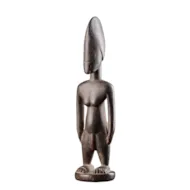
SOLD
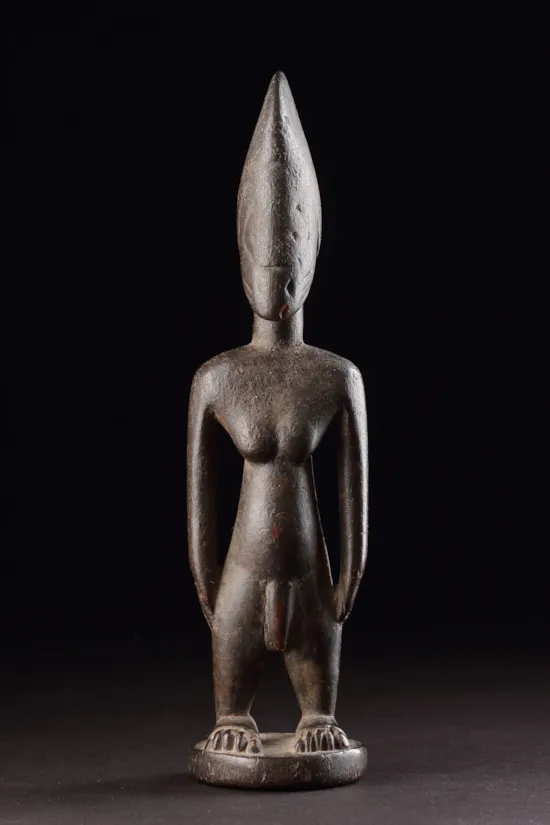
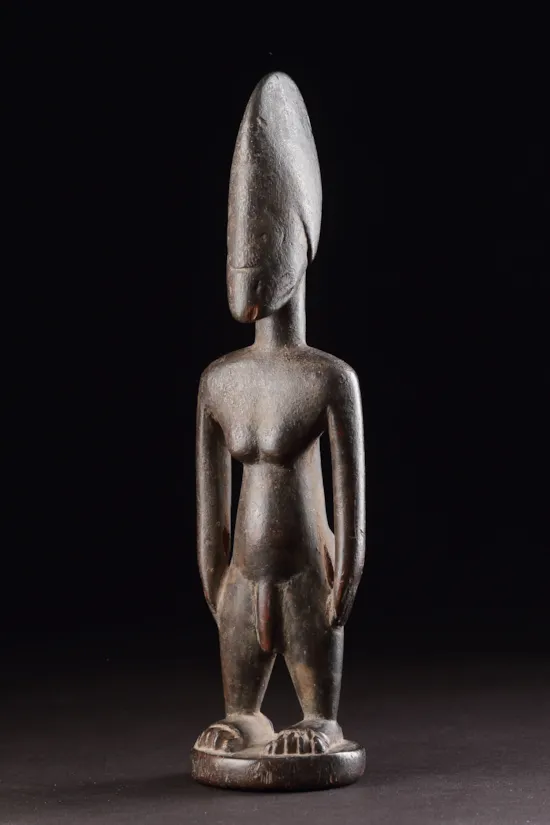
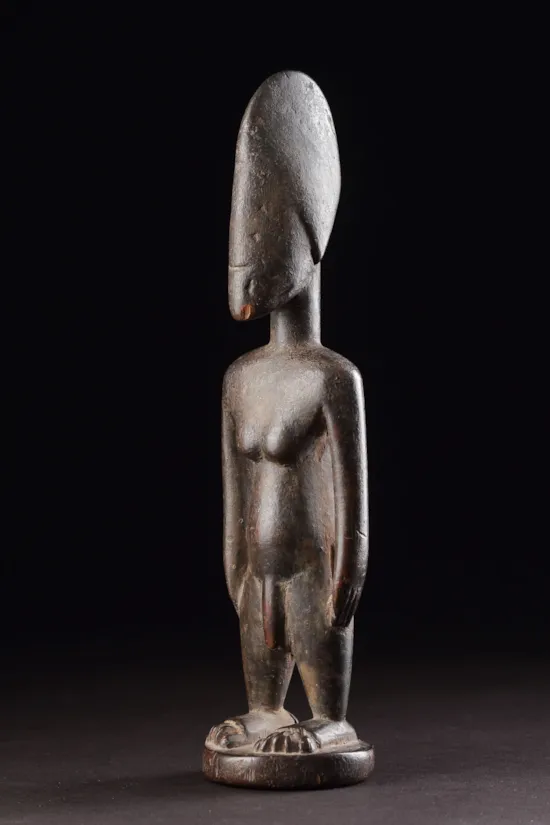

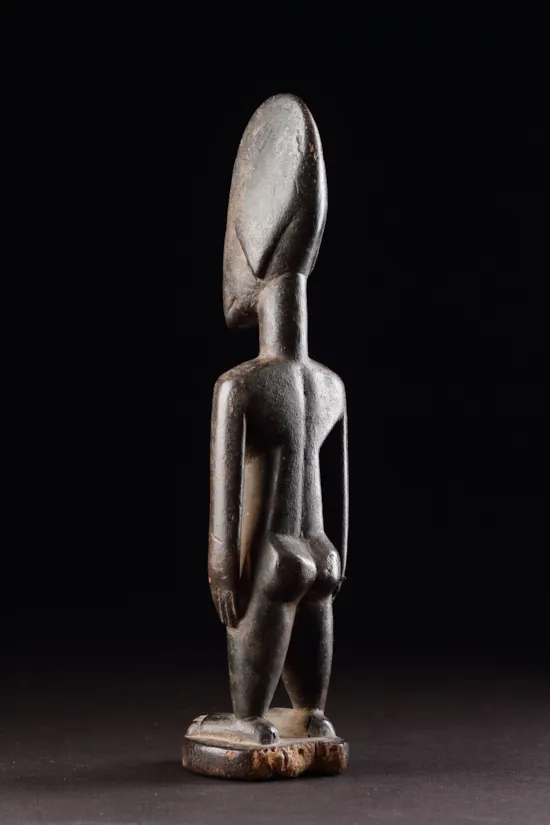
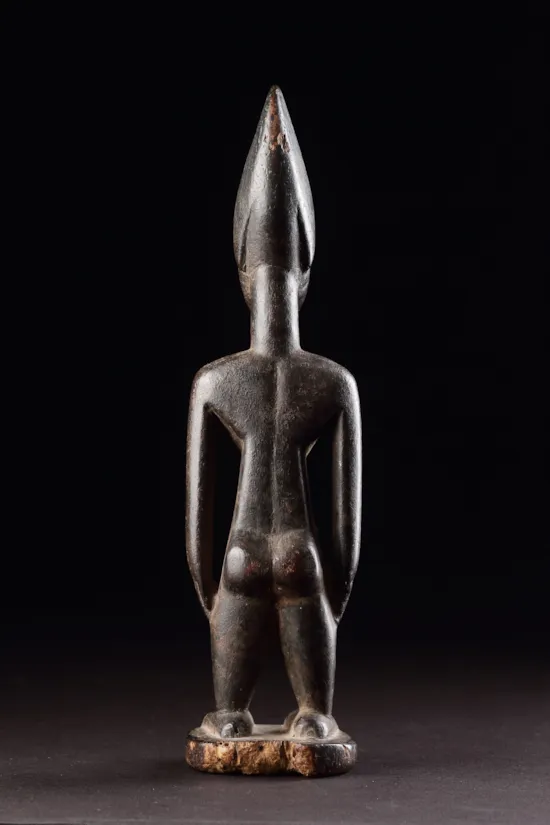
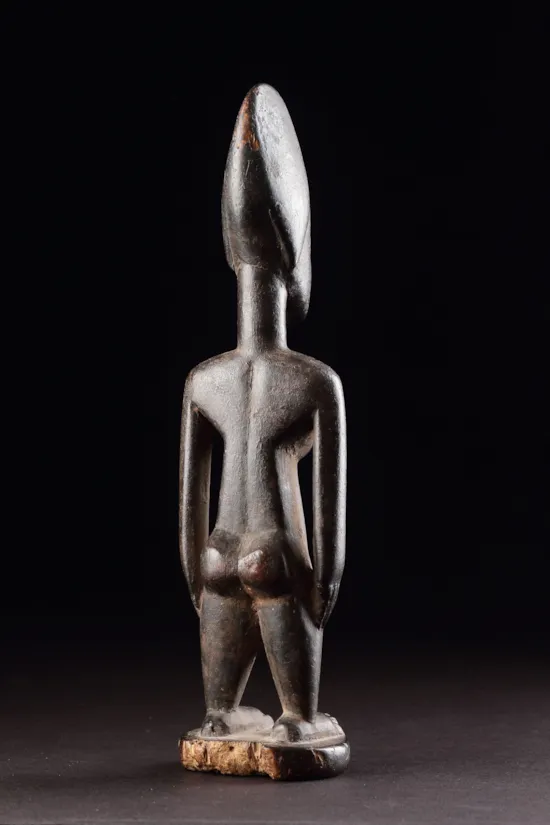
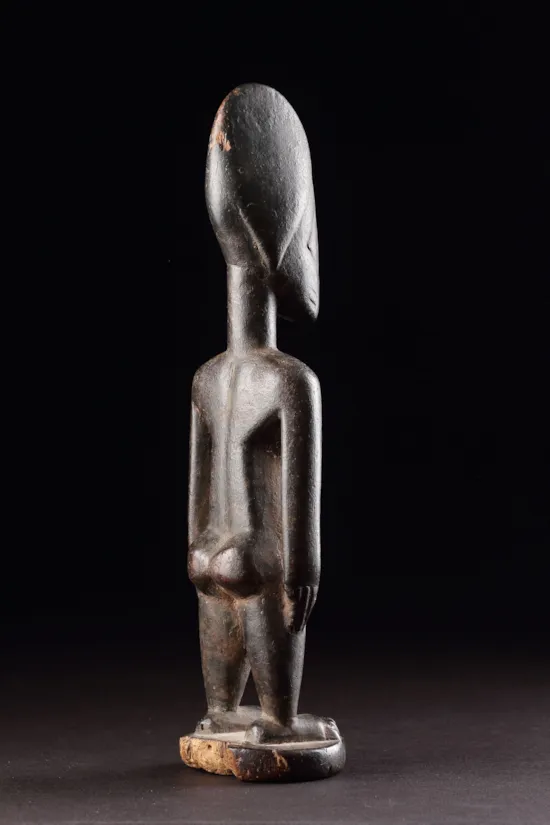
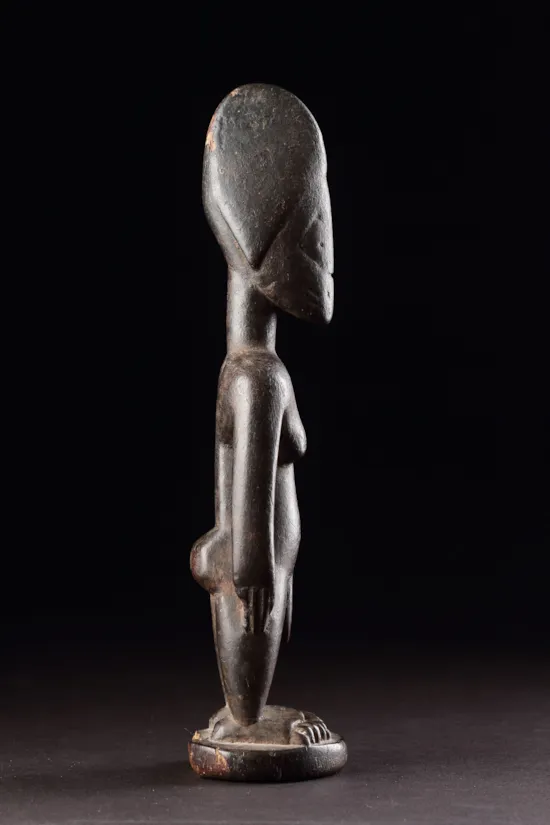
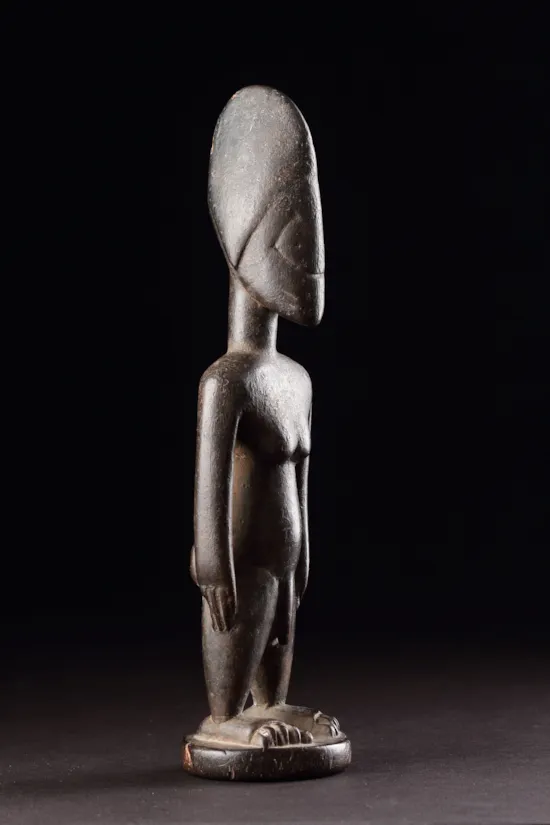
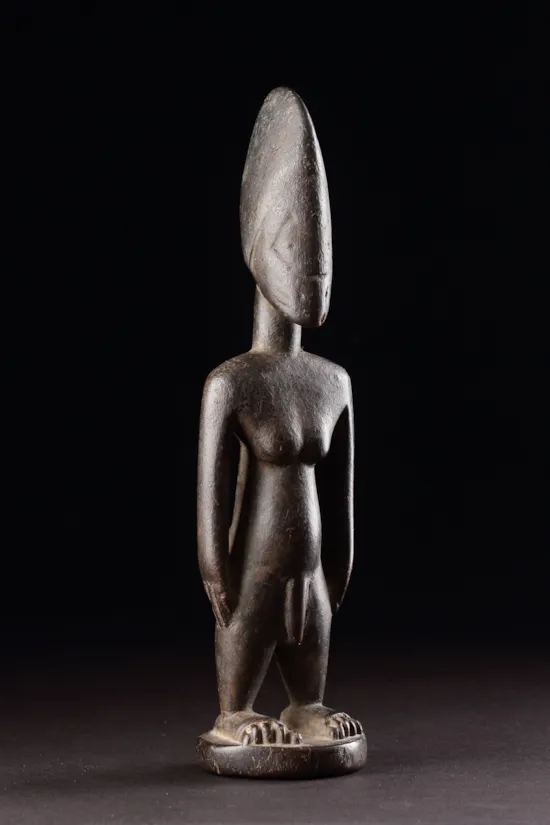

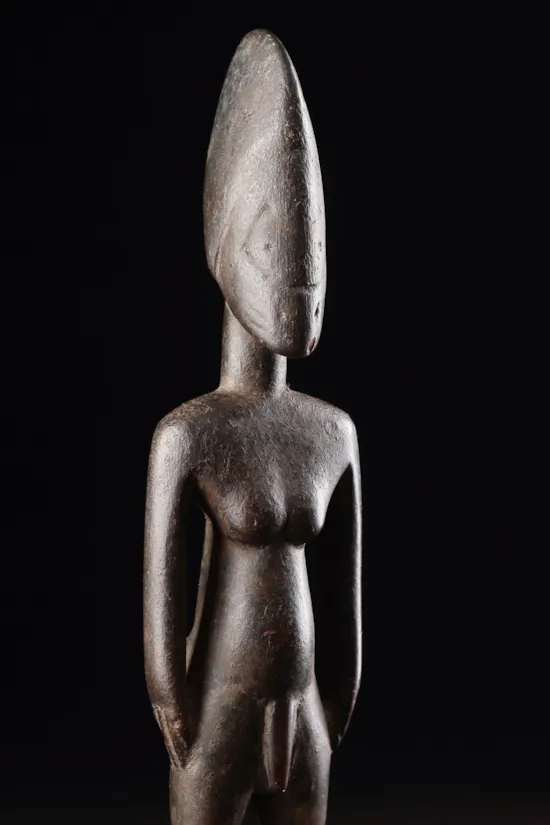
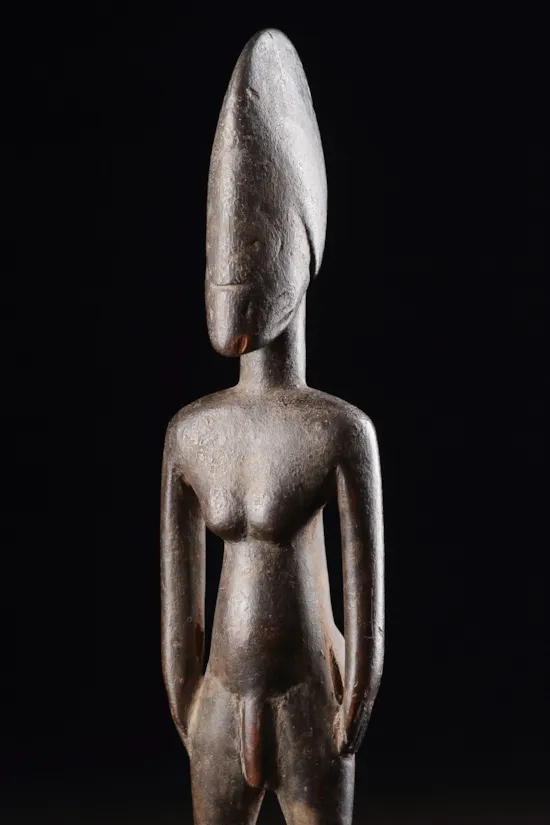
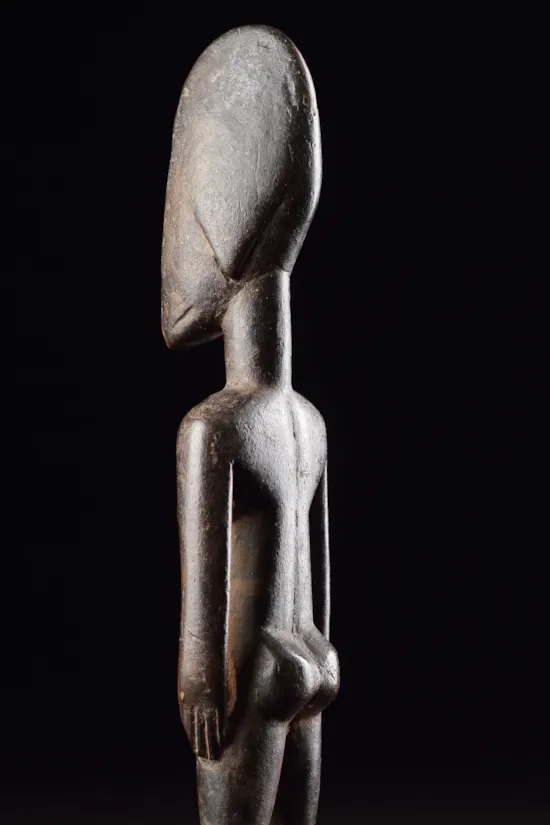















YOU MAY ALSO LIKE

